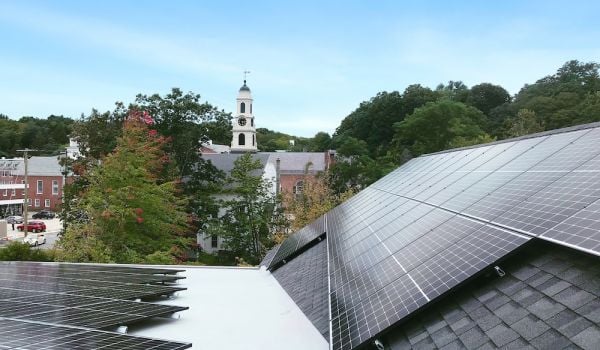Climate change affects low-income communities more than anyone else. These groups are more frequently exposed to environmental hazards like poor air quality, lack access to green spaces, and tend to live in homes with a high energy burden. A Denver-based CDFI is working to make housing for these individuals greener, which could lower residents’ energy bills and potentially improve their health.
The Triple Bottom Line Foundation (TBL Fund), a CDFI founded in 2015 that’s part of the nonprofit social enterprise ICAST, serves small and mid-sized multifamily properties, such as apartment buildings, that house underserved groups, including low-income senior citizens, veterans, people with disabilities and other underserved groups. The organization funds sustainable retrofits on these properties, including weatherization upgrades, solar installations, and health and safety projects.
The need to fund projects that green up multifamily properties is multifaceted. Low-income housing tends to be older — more than 40% of public housing projects were built before 1975, and most cities didn’t have energy-efficiency requirements in place yet. And, low-income individuals are more likely to live in multifamily housing.
“There’s a huge stock of old affordable housing properties that are very poorly built,” says Ravi Malhotra, ICAST founder and president. “A way to solve the housing affordability crisis, from our perspective, is to make the property as efficient as possible.”
The TBL Fund’s typical borrowers are multifamily property owners. They undergo a loan approval process that involves examining their savings, the property’s value and expenses, profit and loss statements, and how the green upgrades will benefit the property. “We’re much more lenient in terms of the loan to value or debt service coverage ratio versus a typical bank,” Malhotra says. “We’re using a different lens.”
One of the TBL Fund’s recent projects involved $1 million and $690,500 loans to the Santa Fe County Housing Authority and Truth or Consequence Housing Authority in New Mexico for retrofits to incorporate energy efficiency, solar power and water conservation. The projects served about 300 households, created nearly 40 sustainable jobs, and will provide more than $6.4 million in utility bill savings over the life of the projects and reduce carbon emissions by 42 million pounds, according to the organization.
An energy-efficient retrofit on a 60-unit property in Salt Lake City, Utah, included replacing furnaces and air-conditioning units that were more than 20 years old with dual fuel heat pumps and installing smart thermostats. The project, which cost nearly $600,000, is projected to save more than $75,700 a year in utility costs.
Malhotra says making multifamily buildings more efficient ultimately makes properties more affordable — since utility bills will be lower — which means they’re more desirable for renters. The retrofits also increase a building’s value. Still, he says it’s sometimes tough to convince property owners to take out loans and spend the money on retrofits.
“Nobody’s beating down our door, wanting to go green and take money to do so,” Malhotra says. “We’re trying to bust the myth that if it’s green, it’s got to be more expensive. It’s an educational process, a sales process, which takes months and sometimes years.”
The TBL Fund hosts webinars about their work and the benefits it brings property owners, publishes articles on the subject, speaks at conferences, and meets one-on-one with owners, he says.
The new Inflation Reduction Act (IRA) could make green upgrades more enticing. The program is investing billions of dollars in clean energy projects, including energy-efficiency retrofits for homes and buildings like rooftop solar, efficient electric appliances, and weatherization. The goal is to make homes healthier and safer and create more environmentally just communities.
“There’s more money flowing in,” Malhotra says. “The IRA opportunity is going to help us grow leaps and bounds.” Though, it’s not year clear when and how the money will be available.
Green investments in multifamily homes are a long-term investment that can transform communities, he says. The IRA is generating buzz on the subject.
“People are actually talking about” the benefits of making buildings greener, Malhotra says. “It seems like we’ve reached a tipping point. Our client base is interested, and they’re being educated about all the opportunities and funding out there. So, we’re hoping to do a lot more of this work.”

This story is part of our series, CDFI Futures, which explores the community development finance industry through the lenses of equity, public policy and inclusive community development. The series is generously supported by Partners for the Common Good. Sign up for PCG’s CapNexus newsletter at capnexus.org.
Erica Sweeney is a freelance journalist based in Little Rock, AR. She covers health, wellness, business and many other topics. Her work has appeared in The New York Times, The Guardian, Good Housekeeping, HuffPost, Parade, Money, Insider and more.






_920_614_600_350_80_s_c1.jpg)
_600_350_80_s_c1.jpg)
_600_350_80_s_c1.JPG)







